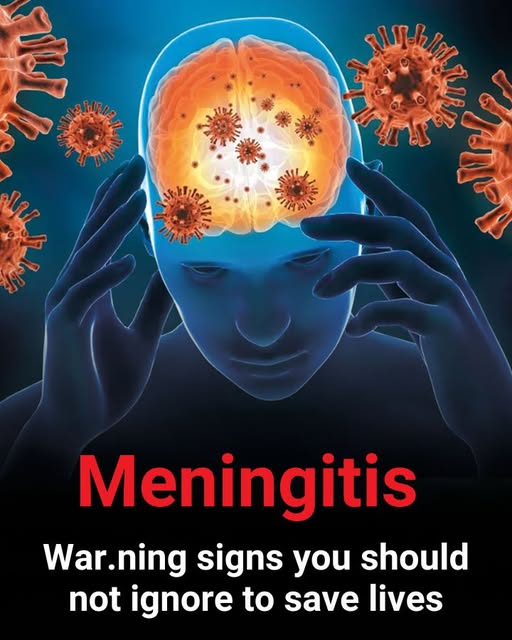Meningitis, These crucial warning signs should not be ignored to save lives

A seemingly simple fever, a few aches, and a headache might appear harmless at first glance, but these symptoms can sometimes hide the rapid onset of fulminating meningitis—a potentially fatal infection that strikes with alarming speed. Every year, this disease emerges suddenly, leaving dramatic consequences in its wake. Recognizing it early is crucial, yet its initial signs often mimic common illnesses like the flu or gastroenteritis. However, there are specific symptoms that should immediately raise red flags: a stiff neck so painful that even gentle head movements become unbearable; a sudden intolerance to bright light and loud noises; and red or purplish spots on the skin that do not fade when pressed, known as purpura fulminans. In infants, unusual lethargy, excessive sleepiness, or a bulging soft spot on the head are warning signals for parents.
The urgency in addressing meningitis cannot be overstated. Certain forms, like meningococcal C meningitis, can progress within mere hours, earning the ominous label “fulminant.” The consequences of a delayed response can be devastating, including amputations, neurological disorders, epileptic seizures, or even death if treatment is not administered swiftly. This is why prevention is so vital. Since January 1, 2025, vaccination against meningococcus B has been mandatory from birth in France—a measure introduced to curb a 72% rise in cases seen in 2023. Alongside vaccination, simple hygiene practices can help limit transmission: frequent hand washing, avoiding sharing cutlery or personal items, and wearing a mask when ill are all effective strategies. Organizations like “Audrey – Méningites France,” founded by parents who have tragically lost a child, work tirelessly to raise awareness about early screening and prevention. When in doubt, it’s always best to err on the side of caution: if you notice unusual symptoms, such as a stiff neck or unexplained skin spots, call 911 immediately, as early detection can make all the difference.
While discussing critical health issues, it’s also important not to ignore seemingly minor pains that could indicate serious underlying problems if left unaddressed. For instance, painful urination accompanied by an increased or urgent need to go might signal a urinary tract infection, often caused by bacteria or kidney stones. Throbbing leg pain with swelling and redness could be a warning sign of deep vein thrombosis, a condition that may lead to a life-threatening pulmonary embolism if a blood clot travels to the lungs. Severe throat pain—especially when swallowing feels like chewing on sand—may hint at tonsil stones or strep throat, which, if ignored, could develop into more complex issues. Chest pain, spanning from the shoulders to the ribcage, particularly when accompanied by shortness of breath or dizziness, can be a harbinger of a heart attack or other serious cardiac conditions. While headaches are common, a severe headache paired with nausea, confusion, or visual disturbances might be a signal of conditions such as hemorrhagic stroke, an aneurysm, or even meningitis. Sharp pain in the lower back may indicate issues ranging from muscle strain to sciatica, and if it occurs on the right side, it could also be related to conditions like kidney stones or a herniated disk. Finally, pelvic pain in women—often associated with menstruation, endometriosis, or ovarian cysts—can sometimes point to more severe conditions like ectopic pregnancy or even cancer.
If any of these pains or symptoms persist or cause significant discomfort, seeking prompt medical attention is essential. Addressing even minor issues early can prevent them from developing into major health problems. Ultimately, staying informed, vigilant, and proactive about your health is the best way to protect yourself and your loved ones, ensuring that potential dangers are caught in time before they escalate into irreversible tragedies.